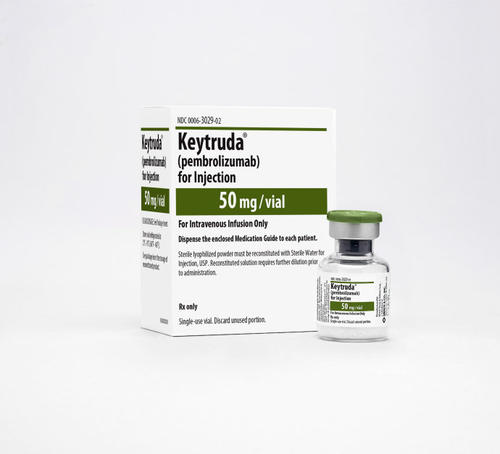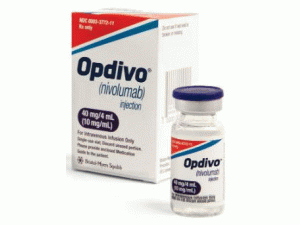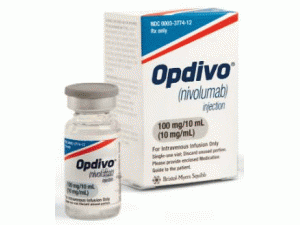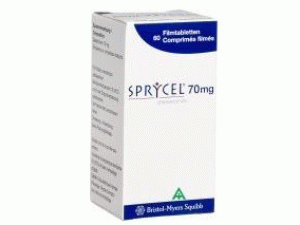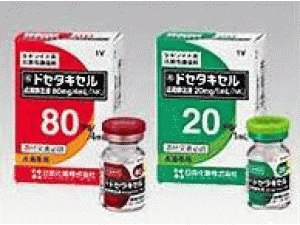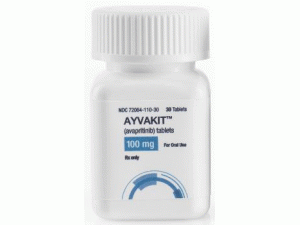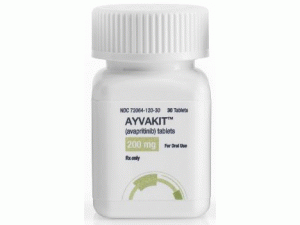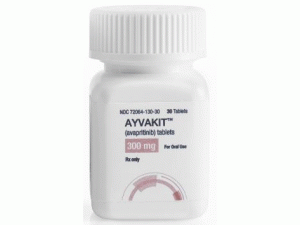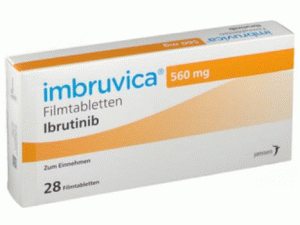右雷佐生冻干粉注射剂(ZINECARD 500MG SDV LYO PWD)
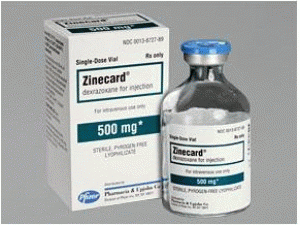 产地国家:美国
处方药:是
包装规格:500毫克/瓶
计价单位:瓶
生产厂家英文名:PFIZER INC
原产地英文商品名:ZINECARD 500MG SDV LYO PWD 1/EA
原产地英文药品名:DEXRAZOXANE HCL
中文参考商品译名:辛卡德冻干粉注射剂 500毫克/瓶 1瓶
中文参考药品译名:右丙亚胺
产地国家:美国
处方药:是
包装规格:500毫克/瓶
计价单位:瓶
生产厂家英文名:PFIZER INC
原产地英文商品名:ZINECARD 500MG SDV LYO PWD 1/EA
原产地英文药品名:DEXRAZOXANE HCL
中文参考商品译名:辛卡德冻干粉注射剂 500毫克/瓶 1瓶
中文参考药品译名:右丙亚胺
简介:
部份中文右雷佐生处方资料(仅供参考)分 类:肿瘤用药/抗肿瘤辅助药。 临床应用:减轻或减少蒽环类抗生素(如多柔比星)化疗引起的心肌毒性(国外资料) 用法用量:本药用量为多柔比星剂量的10倍。从开始给药计算,至少给予本药30min后使用多柔比星,应缓慢注射或较快的滴注。有亚硝基脲用药史者,本药最大耐受量为750mg/㎡;无亚硝基脲用药史者,本药最大耐受量为1250mg/㎡。 给药说明:1.给药条件 本药不能用于非蒽环霉素类药物引起的心脏毒性。2.配伍信息 用0.167mol的乳酸钠注射液将本药配制成10mg/ml浓度,然后用NS或5%GS稀释至浓度为1.3~5mg/ml,稀释液在2~8℃或室温下可稳定6h。 包装规格:ZINECARD SDV 250MG 10ML DEXRAZOXANE HCL PFIZER INC INJECTABLE ;ZINECARD SDV 500MG 10ML DEXRAZOXANE HCL PFIZER INC INJECTABLE;ZINECARD 250MG SDV LYO PWD 1/EA DEXRAZOXANE HCL PFIZER INC. ;ZINECARD 500MG SDV LYO PWD 1/EA DEXRAZOXANE HCL PFIZER INC. 完整说明书附件:https://dailymed.nlm.nih.gov/dailymed/drugInfo.cfm?setid=f68a34ae-e17e-45b3-8c8e-8d7194b2124a英文版说明书:
ZINECARD(dexrazoxane for injection)DESCRIPTIONZINECARD(dexrazoxane for injection) is a sterile, pyrogen-free lyophilizate intended for intravenous administration. It is a cardioprotective agent for use in conjunction with doxorubicin.Chemically, dexrazoxane is (S)-4,4'-(1-methyl-1,2-ethanediyl)bis-2,6piperazinedione. The structural formula is as follows:Dexrazoxane, a potent intracellular chelating agent is a derivative of EDTA. Dexrazoxane is a whitish crystalline powder which melts at 191° to 197°C. It is sparingly soluble in water and 0.1 N HCl, slightly soluble in ethanol and methanol and practically insoluble in nonpolar organic solvents. The pK a is 2.1. Dexrazoxane has an octanol/water partition coefficient of 0.025 and degrades rapidly above a pH of 7.0.ZINECARD is available in 250 mg and 500 mg single use only vials.Each 250 mg vial contains dexrazoxane hydrochloride equivalent to 250 mg dexrazoxane. Hydrochloric Acid, NF is added for pH adjustment. When reconstituted as directed with the 25 mL vial of 0.167 Molar (M/6) Sodium Lactate Injection, USP diluent provided, each mL contains: 10 mg dexrazoxane. The pH of the resultant solution is 3.5 to 5.5.Each 500 mg vial contains dexrazoxane hydrochloride equivalent to 500 mg dexrazoxane. Hydrochloric Acid, NF is added for pH adjustment. When reconstituted as directed with the 50 mL vial of 0.167 Molar (M/6) Sodium Lactate Injection, USP diluent provided, each mL contains: 10 mg dexrazoxane. The pH of the resultant solution is 3.5 to 5.5.CLINICAL PHARMACOLOGYMechanism of Action:The mechanism by which ZINECARD exerts its cardioprotective activity is not fully understood. Dexrazoxane is a cyclic derivative of EDTA that readily penetrates cell membranes. Results of laboratory studies suggest that dexrazoxane is converted intracellularly to a ring-opened chelating agent that interferes with iron-mediated free radical generation thought to be responsible, in part, for anthracycline induced cardiomyopathy.Pharmacokinetics:The pharmacokinetics of dexrazoxane have been studied in advanced cancer patients with normal renal and hepatic function. Generally, the pharmacokinetics of dexrazoxane can be adequately described by a two-compartment open model with first-order elimination. Dexrazoxane has been administered as a 15 minute infusion over a dose-range of 60 to 900 mg/m 2 with 60 mg/m 2 of doxorubicin, and at a fixed dose of 500 mg/m 2 with 50 mg/m 2 doxorubicin. The disposition kinetics of dexrazoxane are dose-independent, as shown by linear relationship between the area under plasma concentration-time curves and administered doses ranging from 60 to 900 mg/m 2 . The mean peak plasma concentration of dexrazoxane was 36.5 µg/mL at the end of the 15 minute infusion of a 500 mg/m 2 dose of ZINECARD administered 15 to 30 minutes prior to the 50 mg/m 2 doxorubicin dose. The important pharmacokinetic parameters of dexrazoxane are summarized in the following table.Following a rapid distributive phase (~0.2 to 0.3 hours), dexrazoxane reaches post-distributive equilibrium within two to four hours. The estimated steady-state volume of distribution of dexrazoxane suggests its distribution primarily in the total body water (25 L/m 2 ). The mean systemic clearance and steady-state volume of distribution of dexrazoxane in two Asian female patients at 500 mg/m 2 dexrazoxane along with 50 mg/m 2 doxorubicin were 15.15 L/h/m 2 and 36.27 L/m 2 , respectively, but their elimination half-life and renal clearance of dexrazoxane were similar to those of the ten Caucasian patients from the same study. Qualitative metabolism studies with ZINECARD have confirmed the presence of unchanged drug, a diacid-diamide cleavage product, and two monoacid-monoamide ring products in the urine of animals and man. The metabolite levels were not measured in the pharmacokinetic studies.Urinary excretion plays an important role in the elimination of dexrazoxane. Forty-two percent of the 500 mg/m 2 dose of ZINECARD was excreted in the urine.Protein Binding:In vitro studies have shown that ZINECARD is not bound to plasma proteins.Special Populations:Pediatric:The pharmacokinetics of ZINECARD have not been eva luated in pediatric patients.Gender: Analysis of pooled data from two pharmacokinetic studies indicate that male patients have a lower mean clearance value than female patients (110 mL/min/m 2 versus 133 mL/min/m 2 ). This gender effect is not clinically relevant.Renal insufficiency:The pharmacokinetics of ZINECARD have not been eva luated in patients with renal impairment.Hepatic insufficiency: The pharmacokinetics of ZINECARD have not been eva luated in patients with hepatic impairment. The ZINECARD dose is dependent upon the dose of doxorubicin (see DOSAGE AND ADMINISTRATION ). Since a doxorubicin dose reduction is recommended in the presence of hyperbilirubinemia, the ZINECARD dosage is proportionately reduced in patients with hepatic impairment.Drug Interactions: There was no significant change in the pharmacokinetics of doxorubicin (50 mg/m 2 ) and its predominant metabolite, doxorubicinol, in the presence of dexrazoxane (500 mg/m 2 ) in a crossover study in cancer patients.Clinical Studies: The ability of ZINECARD to prevent/reduce the incidence and severity of doxorubicin-induced cardiomyopathy was demonstrated in three prospectively randomized placebo-controlled studies. In these studies, patients were treated with a doxorubicin-containing regimen and either ZINECARD or placebo starting with the first course of chemotherapy. There was no restriction on the cumulative dose of doxorubicin. Cardiac function was assessed by measurement of the left ventricular ejection fraction (LVEF), utilizing resting multigated nuclear medicine (MUGA) scans, and by clinical eva luations. Patients receiving ZINECARD had significantly smaller mean decreases from baseline in LVEF and lower incidences of congestive heart failure than the control group. The difference in decline from baseline in LVEF was evident beginning with a cumulative doxorubicin dose of 150 mg/m 2 and reached statistical significance in patients who received >/=400 mg/m 2 of doxorubicin. In addition to eva luating the effect of ZINECARD on cardiac function, the studies also assessed the effect of the addition of ZINECARD on the antitumor efficacy of the chemotherapy regimens. In one study (the largest of three breast cancer studies) patients with advanced breast cancer receiving fluorouracil, doxorubicin and cyclophosphamide (FAC) with ZINECARD had a lower response rate (48% vs 63%; p=0.007) and a shorter time to progression than patients who received FAC + placebo, although the survival of patients who did or did not receive ZINECARD with FAC was similar.Two of the randomized breast cancer studies eva luating the efficacy and safety of FAC with either ZINECARD or placebo were amended to allow patients on the placebo arm who had attained a cumulative dose of doxorubicin of 300 mg/m 2 (six courses of FAC) to receive FAC with open-label ZINECARD for each subsequent course. This change in design allowed examination of whether there was a cardioprotective effect of ZINECARD even when it was started after substantial exposure to doxorubicin.Retrospective historical analyses were then performed to compare the likelihood of heart failure in patients to whom ZINECARD was added to the FAC regimen after they had received six (6) courses of FAC (and who then continued treatment with FAC therapy) with the heart failure rate in patients who had received six (6) courses of FAC and continued to receive this regimen without added ZINECARD. These analyses showed that the risk of experiencing a cardiac event (see Table 1 for definition) at a given cumulative dose of doxorubicin above 300 mg/m 2 was substantially greater in the 99 patients who did not receive ZINECARD beginning with their seventh course of FAC than in the 102 patients who did receive ZINECARD (See Figure 1).Figure 1 displays the risk of developing congestive heart failure by cumulative dose of doxorubicin in patients who received ZINECARD starting with their seventh course of FAC compared to patients who did not. Patients unprotected by ZINECARD had a 13 times greater risk of developing congestive heart failure. Overall, 3% of patients treated with ZINECARD developed CHF compared with 22% of patients not receiving ZINECARD.Because of its cardioprotective effect, ZINECARD permitted a greater percentage of patients to be treated with extended doxorubicin therapy. Figure 2 shows the number of patients still on treatment at increasing cumulative doses.In addition to eva luating the cardioprotective efficacy of ZINECARD in this setting, the time to tumor progression and survival of these two groups of patients were also compared. There was a similar time to progression in the two groups and survival was at least as long for the group of patients that received ZINECARD starting with their seventh course, i.e., starting after a cumulative dose of doxorubicin of 300 mg/m 2 . These time to progression and survival data should be interpreted with caution, however, because they are based on comparisons of groups entered sequentially in the studies and are not comparisons of prospectively randomized patients.INDICATIONS AND USAGEZINECARD is indicated for reducing the incidence and severity of cardiomyopathy associated with doxorubicin administration in women with metastatic breast cancer who have received a cumulative doxorubicin dose of 300 mg/m 2 and who will continue to receive doxorubicin therapy to maintain tumor control. It is not recommended for use with the initiation of doxorubicin therapy (see WARNINGS ).CONTRAINDICATIONSZINECARD should not be used with chemotherapy regimens that do not contain an anthracycline.WARNINGSZINECARD may add to the myelosuppression caused by chemotherapeutic agents. There is some evidence that the use of dexrazoxane concurrently with the initiation of fluorouracil, doxorubicin and cyclophosphamide (FAC) therapy interferes with the antitumor efficacy of the regimen, and this use is not recommended. In the largest of three breast cancer trials, patients who received dexrazoxane starting with their first cycle of FAC therapy had a lower response rate (48% vs 63%; p=0.007) and shorter time to progression than patients who did not receive dexrazoxane (see Clinical Studies section of CLINICAL PHARMACOLOGY ). Therefore, ZINECARD should only be used in those patients who have received a cumulative doxorubicin dose of 300 mg/m 2 and are continuing with doxorubicin therapy.Although clinical studies have shown that patients receiving FAC with ZINECARD may receive a higher cumulative dose of doxorubicin before experiencing cardiac toxicity than patients receiving FAC without ZINECARD, the use of ZINECARD in patients who have already received a cumulative dose of doxorubicin of 300 mg/m 2 without ZINECARD, does not eliminate the potential for anthracycline induced cardiac toxicity. Therefore, cardiac function should be carefully monitored.Secondary malignancies (primarily acute myeloid leukemia) have been reported in patients treated chronically with oral razoxane. Razoxane is the racemic mixture, of which dexrazoxane is the S(+)-enantiomer. In these patients, the total cumulative dose of razoxane ranged from 26 to 480 grams and the duration of treatment was from 42 to 319 weeks. One case of T-cell lymphoma, a case of B-cell lymphoma and six to eight cases of cutaneous basal cell or squamous cell carcinoma have also been reported in patients treated with razoxane.PRECAUTIONSGeneralDoxorubicin should not be given prior to the intravenous injection of ZINECARD. ZINECARD should be given by slow I.V. push or rapid drip intravenous infusion from a bag. Doxorubicin should be given within 30 minutes after beginning the infusion with ZINECARD. (See DOSAGE AND ADMINISTRATION ).As ZINECARD will always be used with cytotoxic drugs, patients should be monitored closely. While the myelosuppressive effects of ZINECARD at the recommended dose are mild, additive effects upon the myelosuppressive activity of chemotherapeutic agents may occur.Laboratory testsAs ZINECARD may add to the myelosuppressive effects of cytotoxic drugs, frequent complete blood counts are recommended. (See ADVERSE REACTIONS ).Drug InteractionsZINECARD does not influence the pharmacokinetics of doxorubicin.Carcinogenesis, Mutagenesis, Impairment of Fertility (see WARNINGS section for information on human carcinogenicity) - No long-term carcinogenicity studies have been carried out with dexrazoxane in animals. Dexrazoxane was not mutagenic in the Ames test but was found to be clastogenic to human lymphocytes in vitro and to mouse bone marrow erythrocytes in vivo (micronucleus test).The possible adverse effects of ZINECARD on the fertility of humans and experimental animals, male or female, have not been adequately studied. Testicular atrophy was seen with dexrazoxane administration at doses as low as 30 mg/kg weekly for 6 weeks in rats (1/3 the human dose on a mg/m 2 basis) and as low as 20 mg/kg weekly for 13 weeks in dogs (approximately equal to the human dose on a mg/m 2 basis).Pregnancy - Pregnancy Category C - Dexrazoxane was maternotoxic at doses of 2 mg/kg (1/40 the human dose on a mg/m 2 basis) and embryotoxic and teratogenic at 8 mg/kg (approximately 1/10 the human dose on a mg/m 2 basis) when given daily to pregnant rats during the period of organogenesis. Teratogenic effects in the rat included imperforate anus, microphthalmia, and anophthalmia. In offspring allowed to develop to maturity, fertility was impaired in the male and female rats treated in utero during organogenesis at 8 mg/kg. In rabbits, doses of 5 mg/kg (approximately 1/10 the human dose on a mg/m 2 basis) daily during the period of organogenesis were maternotoxic and dosages of 20 mg/kg (1/2 the human dose on a mg/m 2 basis) were embryotoxic and teratogenic. Teratogenic effects in the rabbit included several skeletal malformations such as short tail, rib and thoracic malformations, and soft tissue variations including subcutaneous, eye and cardiac hemorrhagic areas, as well as agenesis of the gallbladder and of the intermediate lobe of the lung. There are no adequate and well-controlled studies in pregnant women. ZINECARD should be used during pregnancy only if the potential benefit justifies the potential risk to the fetus.Nursing Mothers - It is not known whether dexrazoxane is excreted in human milk. Because many drugs are excreted in human milk and because of the potential for serious adverse reactions in nursing infants exposed to dexrazoxane, mothers should be advised to discontinue nursing during dexrazoxane therapy.Pediatric Use - Safety and effectiveness of dexrazoxane in pediatric patients have not been established.Geriatric Use - Clinical studies of ZINECARD did not include sufficient numbers of subjects aged 65 and over to determine whether they respond differently from younger subjects. Other reported clinical experience has not identified differences in responses between the elderly and younger patients. In general, elderly patients should be treated with caution due to the greater frequency of decreased hepatic, renal, or cardiac function, and concomitant disease or other drug therapy.ADVERSE REACTIONSZINECARD at a dose of 500 mg/m 2 has been administered in combination with FAC in randomized, placebo-controlled, double-blind studies to patients with metastatic breast cancer. The dose of doxorubicin was 50 mg/m 2 in each of the trials. Courses were repeated every three weeks, provided recovery from toxicity had occurred. Table 2 below lists the incidence of adverse experiences for patients receiving FAC with either ZINECARD or placebo in the breast cancer studies. Adverse experiences occurring during courses 1 through 6 are displayed for patients receiving ZINECARD or placebo with FAC beginning with their first course of therapy (column 1 & 3, respectively). Adverse experiences occurring at course 7 and beyond for patients who received placebo with FAC during the first six courses and who then received either ZINECARD or placebo with FAC are also displayed (column 2 & 4, respectively).The adverse experiences listed above are likely attributable to the FAC regimen with the exception of pain on injection that was observed mainly on the ZINECARD arm.MyelosuppressionPatients receiving FAC with ZINECARD experienced more severe leucopenia, granulocytopenia and thrombocytopenia at nadir than patients receiving FAC without ZINECARD, but recovery counts were similar for the two groups of patients.Hepatic and RenalSome patients receiving FAC + ZINECARD or FAC + placebo experienced marked abnormalities in hepatic or renal function tests, but the frequency and severity of abnormalities in bilirubin, alkaline phosphatase, BUN, and creatinine were similar for patients receiving FAC with or without ZINECARD.OVERDOSAGEThere have been no instances of drug overdose in the clinical studies sponsored by either Pharmacia & Upjohn Company or the National Cancer Institute. The maximum dose administered during the cardioprotective trials was 1000 mg/m 2 every three weeks.Disposition studies with ZINECARD have not been conducted in cancer patients undergoing dialysis, but retention of a significant dose fraction (>0.4) of the unchanged drug in the plasma pool, minimal tissue partitioning or binding, and availability of greater than 90% of the systemic drug levels in the unbound form suggest that it could be removed using conventional peritoneal or hemodialysis.There is no known antidote for dexrazoxane. Instances of suspected overdose should be managed with good supportive care until resolution of myelosuppression and related conditions is complete. Management of overdose should include treatment of infections, fluid regulation, and maintenance of nutritional requirements.DOSAGE AND ADMINISTRATIONThe recommended dosage ratio of ZINECARD:doxorubicin is 10:1 (eg, 500 mg/m 2 ZINECARD:50 mg/m 2 doxorubicin). Since a doxorubicin dose reduction is recommended in the presence of hyperbilirubinemia, the ZINECARD dosage should be proportionately reduced (maintaining the 10:1 ratio) in patients with hepatic impairment. ZINECARD must be reconstituted with 0.167 Molar (M/6) Sodium Lactate Injection, USP, to give a concentration of 10 mg ZINECARD for each mL of sodium lactate. The reconstituted solution should be given by slow I.V. push or rapid drip intravenous infusion from a bag. After completing the infusion of ZINECARD, and prior to a total elapsed time of 30 minutes (from the beginning of the ZINECARD infusion), the intravenous injection of doxorubicin should be given.Reconstituted ZINECARD, when transferred to an empty infusion bag, is stable for 6 hours from the time of reconstitution when stored at controlled room temperature, 15° to 30°C (59° to 86°F) or under refrigeration, 2° to 8°C (36° to 46°F). DISCARD UNUSED SOLUTIONS.The reconstituted ZINECARD solution may be diluted with either 0.9% Sodium Chloride Injection, USP or 5.0% Dextrose Injection, USP to a concentration range of 1.3 to 5.0 mg/mL in intravenous infusion bags. The resultant solutions are stable for 6 hours when stored at controlled room temperature, 15° to 30°C (59° to 86°F) or under refrigeration, 2° to 8°C (36° to 46°F). DISCARD UNUSED SOLUTIONS.IncompatibilityZINECARD should not be mixed with other drugs.Parenteral drug products should be inspected visually for particulate matter and discoloration prior to administration, whenever solution and container permit.Handling and Disposal: Caution in the handling and preparation of the reconstituted solution must be exercised and the use of gloves is recommended. If ZINECARD powder or solutions contact the skin or mucosae, immediately wash thoroughly with soap and water.Procedures normally used for proper handling and disposal of anticancer drugs should be considered for use with ZINECARD. Several guidelines on this subject have been published. 1-8 There is no general agreement that all of the procedures recommended in the guidelines are necessary or appropriate.HOW SUPPLIEDZINECARD ® (dexrazoxane for injection) is available in the following strengths as sterile, pyrogen-free lyophilizates.NDC 0013-8715-62250 mg single dose vial with a red flip-top seal, packaged in single vial packs. (This package also contains a 25 mL vial of 0.167 Molar (M/6) Sodium Lactate Injection, USP.)NDC 0013-8725-89500 mg single dose vial with a blue flip-top seal, packaged in single vial packs. (This package also contains a 50 mL vial of 0.167 Molar (M/6) Sodium Lactate Injection, USP.)Store at 25°C (77°F); excursions permitted to 15° to 30°C (59° to 86°F) [see USP Controlled Room Temperature]. Reconstituted solutions of ZINECARD are stable for 6 hours at controlled room temperature or under refrigeration, 2° to 8°C (36° to 46°F). DISCARD UNUSED SOLUTIONS.用药温馨提示:当您服用此药物时,需定期接受医疗专业人士的检查,以便随时针对其药效、副作用等情况进行监测。本网站所包含的信息旨在为患者提供帮助,不能代替医学建议和治疗。
药品价格查询,专业药品查询网站,药品说明书查询,药品比价 » 右雷佐生冻干粉注射剂(ZINECARD 500MG SDV LYO PWD)
药品价格查询,专业药品查询网站,药品说明书查询,药品比价 » 右雷佐生冻干粉注射剂(ZINECARD 500MG SDV LYO PWD)

